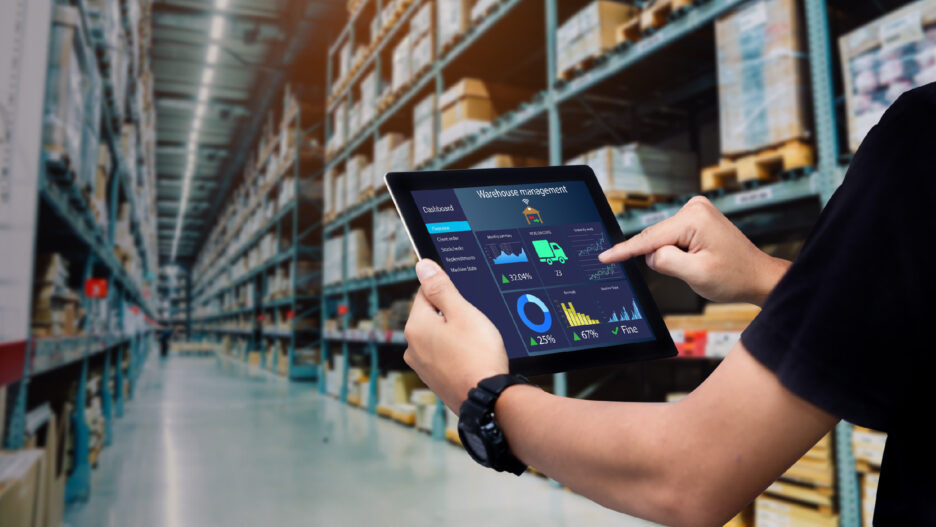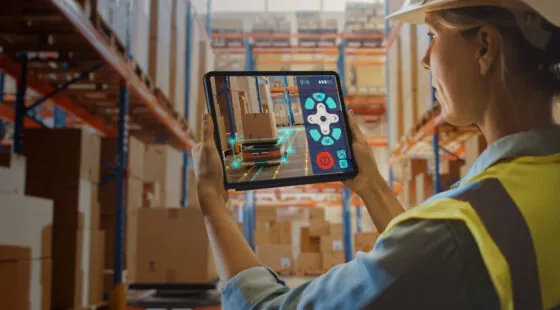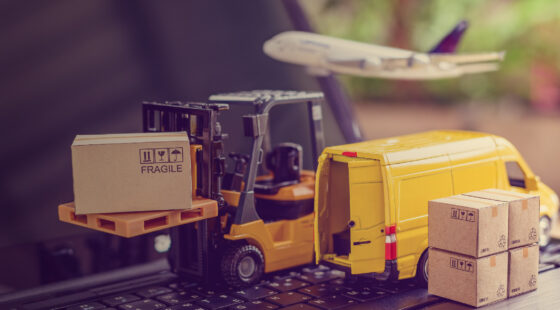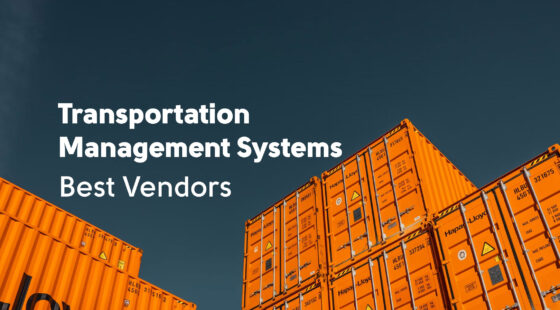At the moment, blockchain in supply chain management can be a perfect answer to all those disruptions and security attacks at logistics and transportation systems globally. In fact, during nine months, every organization deals with almost 120,000 security alerts. This unmanageable number often leads to harmful threats, reputational damage, and financial losses. By 2026, security breaches in supply chains around the world are projected to cost $81 billion to the global economy. Besides that, fraudsters that want to tap into the supply chain “gold mines” increase the number of procurement fraud cases by 13% each year.
In this article, we will unearth all the essential intel about blockchain, its features, ways to integrate blockchain in logistics to achieve maximum transparency and enhanced security.
Key Features of Blockchain in the Supply Chain Management
Let’s look at the key features of blockchain in the framework of a supply chain.
Fully Decentralized and Distributed Ledger
Although each contributor (from a retailer, supplier, producer to end user) shares access to the same ledger of all recorded transactions, it is also distributed and no one in a chain will own or control data.
For example, in a logistics ledger, every transaction, every shipped item movement is tracked and recorded. Any change in the product journey can be easily traced, since all records are immutable, meaning that any alterations will be only added as new records.
Smart Contracts
Adding to the blockchain predefined rules, terms, and conditions that will enable automatic action enforcement and execution is one of the surefire ways to exclude an intermediary that may be prone to error and corruption. For example, smart contracts can be used to initiate automatic creation of electronic consignment notes (e-CMRs) if all the conditions of dispatch execution are performed right. In this case, blockchain in transportation will offset manual approval, minimize wait times, and human error in all logistics processes.
Cryptographic Hashing
So, what stands behind the immutability of blockchain? When any data is added to the block, a cryptographic hash function turns it into a string of characters (hash output) with fixed length. Like a unique fingerprint of data input, together with the hash of a prior block and a timestamp, they make the core of each block. Any change in the block will be reflected in the hash, which will impact the entire chain.
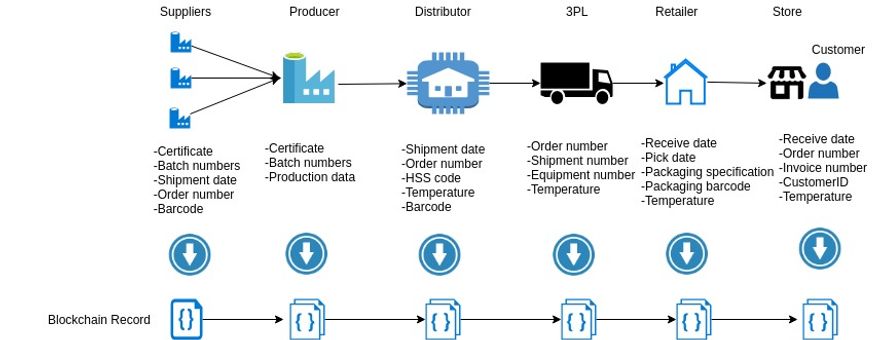
Source: ScienceSoft
Peer-to-Peer Protocol
A decentralized communication model for your supply chain assets will exclude the need for a central server, allowing all participants (nodes) to interact directly (uploading, downloading and even sharing files with other nodes) and keep the ledger copy. So, when the transaction happens, it is then sent to all participants in the network for further validation.
Consensus Mechanism
Before any transaction gets into the block, it should be validated as secure by the majority of nodes. There are many types of consensus protocols like Proof of Stake (PoS) and Proof of Work (PoW), Delegated Proof of Stake (DPoS) that are mostly used for public blockchains, e.g, Bitcoin, Ethereum, EOS, TRON cryptocurrencies. However, for supply chains, private blockchains coupled with Proof of Authority (PoA) mechanisms are more preferred for their faster transaction speeds, energy efficiency, and scalability.
Benefits of Blockchain for Transportation and Logistics
Now that you know what blockchain is and how it works, let’s get to the full list of its perks. Here are some blockchain supply chain use cases and their real-world examples in logistics, transportation, and inventory management, etc.
- Real-time tracking and tamper-proofing allows for end-to-end visibility into all the shipment events, traceability of goods, and predictability of supply chain issues. That is what TradeLens, a Hyperledger Fabric-based solution from Maersk and IBM, does to handle over 10 million supply chain events weekly. This gigantic platform allows keeping and accessing records on transportation plans, cargo, freight, ports or terminals, involved operators, etc. Among other companies using blockchain to track and trace how a product moves along the supply chain from its raw state to finding its customer are Walmart, Nestlè, Carrefour, etc.
- Counterfeit and fraud prevention: For premium brands, like a jewelry retailer De Beers, for example, compromised authenticity of their luxury diamonds equals brand damage, clients churn, and large financial losses. To ensure authenticity and origin of their products from different locations, they also implemented a dedicated blockchain platform.
- Aura Consortium also strived for the same goals. Created by LVMH, OTB Group, Cartier, Prada, this is the largest joint blockchain-based platform for luxury goods.
- Pharmaceutical giants Pfizer, Jonsons and Jonsons use MediLedger Network to combat fraud of drugs.
- Automatic execution: Smart contracts can trigger actions, like initiate any transport operation, enable payments, automate approval process, exclude paperwork and delays, etc. For instance, DHL Express uses smart contracts to fully automate and secure payments, eliminate administrative work, and speed up the entire delivery process.
- Optimized and more secure data entry and exchange: Port of Rotterdam has implemented its own blockchain solution Quay Connect to fully digitize its customs process and reinforce security of companies’ credentials.
How to Implement a Blockchain-Based Supply Chain
Like with any software solution, it’s impossible to come up with a one-size-fits-all approach to the development of a blockchain-based SCM system. Many factors influence that – the scale and domain of your supply chain, participants that are involved, type of data that should be traced, compliance requirements, and above all the problem you want to resolve – supply chain disruptions, insecure data exchange, fraud or all in one go if you look for a comprehensive solution.
That is why when a client comes to Svitla with a request “We need integrate blockchain in SCM”, we often start with a sort of interrogation:
- What problem do you want to resolve with it or what areas do you want to improve?
- Have you considered other solutions (ERPs or tracking data using cloud, AI, IoT, etc.)? Sometimes, such systems can be even a better option if your infrastructure isn’t ready to adopt blockchain.
- What kind of data should the blockchain deal with—static or real-time?
- How large is your network of providers, partners, and supply chain participants (wholesalers, operators, etc.)? Do you use 3PL (third-party logistics)?
- What existing internal and external systems should be integrated with a blockchain?
- What processes do you expect to automate with the help of blockchain?
To answer most of these questions, you should focus on recommended steps for the blockchain implementation often followed by blockchain experts:
1. Determine Your Objectives and Use Cases
Blockchain is an advanced technology that is designed to resolve specific business problems like traceability, security of transactions, etc. Hence, you should make sure that your supply chain needs blockchain per se. Weigh in all the available non-blockchain options first that may present higher time-to-value like cloud-based SCM solutions from SAP, Oracle, Microsoft, etc. If you already have a well-maintained and fully upgraded system that handles securely all the essential data and operations without disruption, IoT and AI solutions can bridge that gap, offering real-time data tracking and better insights.
2. Analyze Your Supply Chain Pain Points
Assess how much time manual documentation management takes, how many intermediaries your supply chain involves and how it complicates the transaction process. Discover the visibility level of your inventory. Can you track products or items in real-time and get necessary insights without delays?
3. Kick off with Proof of Concept and Minimal Viable Product
Now that you investigated your SCM weaknesses and found where the blockchain would be the most beneficial, we recommend you postponing a full-scale development. At least, until you ascertain whether it works for you or not. You can unearth the potential of blockchain application for your supply chain management using PoC and MVP that help validate its feasibility and understand how it impacts your business.
4. Consider Security Risks of Implementing Blockchain
Many businesses with complicated supply chains choose a premissioned or private blockchain that suggests selecting trusted authorities for approving transactions. Yet, there are some reasonable concerns since the first rule of decentralization fails and many attack vectors can be created, like smart contract exploits, inside attacks, and data integrity attacks.
5. Choose a Trusted SCM-focused Blockchain Platform
Predominance of private blockchains in supply chain management, specifically transportation and logistics, is mostly explained with the need for:
- Data privacy
- Faster transactions processing
- Scalability
- Resource- and cost-efficiency
However, when choosing a blockchain platform always consider existing solutions that are designed for supply chain management and provide an extra security layer to address the above vulnerability exploits.
Here are four supply chain-oriented blockchain platforms, we advise to our clients:

Source: Datafloq
6. Integrate Smart Contracts together with AI, IoT, Predictive Analytics
Combining smart contracts with IoT sensors can help automate payments, workflows, shipment and confirmation procedures, track items in real-time and check whether products quality and transportation conditions comply with regulations like FDA, EU Reach, ISO 28000, etc. Moreover, if you integrate AI and predictive analytics with blockchain, you will simplify asset management, automate portfolio management, determine and mitigate security issues, by analyzing smart contracts, different patterns and suspicious transactional behavior.
Blockchain Implementation Challenges for Supply Chains
If you studied the steps above, you can already guess what kind of challenges the blockchain poses. However, when it gets to the full-scale development, companies often highlight:
- High implementation costs that are often associated with the initial infrastructure rollout, system design, and software development. To build a blockchain you’ll need to purchase servers, hardware, networking equipment, licenses, etc. The range of prices will also depend on the type of network you choose (private, consortium, hybrid), functional modules complexity. For example, if you decide to integrate smart contracts. Connecting multiple web and mobile apps used by different supply chain participants (wholesalers, producers, suppliers, etc.) and existing software like ERPs, CRMs will also drive up costs.
- Integration of blockchain with legacy supply chain systems. Outdated ERPs, CRMs, and inefficient supply chain workflows require upgrade and optimization before integrating them with a selected blockchain type. Using APIs and middleware software can help you establish that essential connection.
- Complex regulatory landscape. The variability of blockchain regulations across different countries and industries, multiple legal jurisdictions often complicate blockchain implementation. Especially if the company operates globally and multiple intermediaries are involved. Besides that, since the technology is still maturing within supply chain logistics, regulatory frameworks are also developing. It means that there is a risk of facing a new legal act, enforcing you to add some changes or reengineer the entire system after it goes live.
- Lack of in-house technical expertise. Globally there are only 19,300 developers of blockchain technology. That is why most businesses look for experts outside of their organization and it’s also quite a challenge to find those who have enough experience in their specific niche and know exactly how to integrate blockchain in it.
Wrap Up
It’s always a matter of costs, new technology profitability, and enough capacity to implement the blockchain technology into your business. However, in global supply chains, prone to overwhelming disruptions, the biggest concerns for businesses are transparency and traceability of highly complex processes and transactions. Blockchain empowered with AI and IoT create a perfect ground for enhanced visibility, ultimate automation, and real-time decision making. For this, you’ll need to establish digital transformation initiatives first, which an experienced partner like Svitla can support you with.

